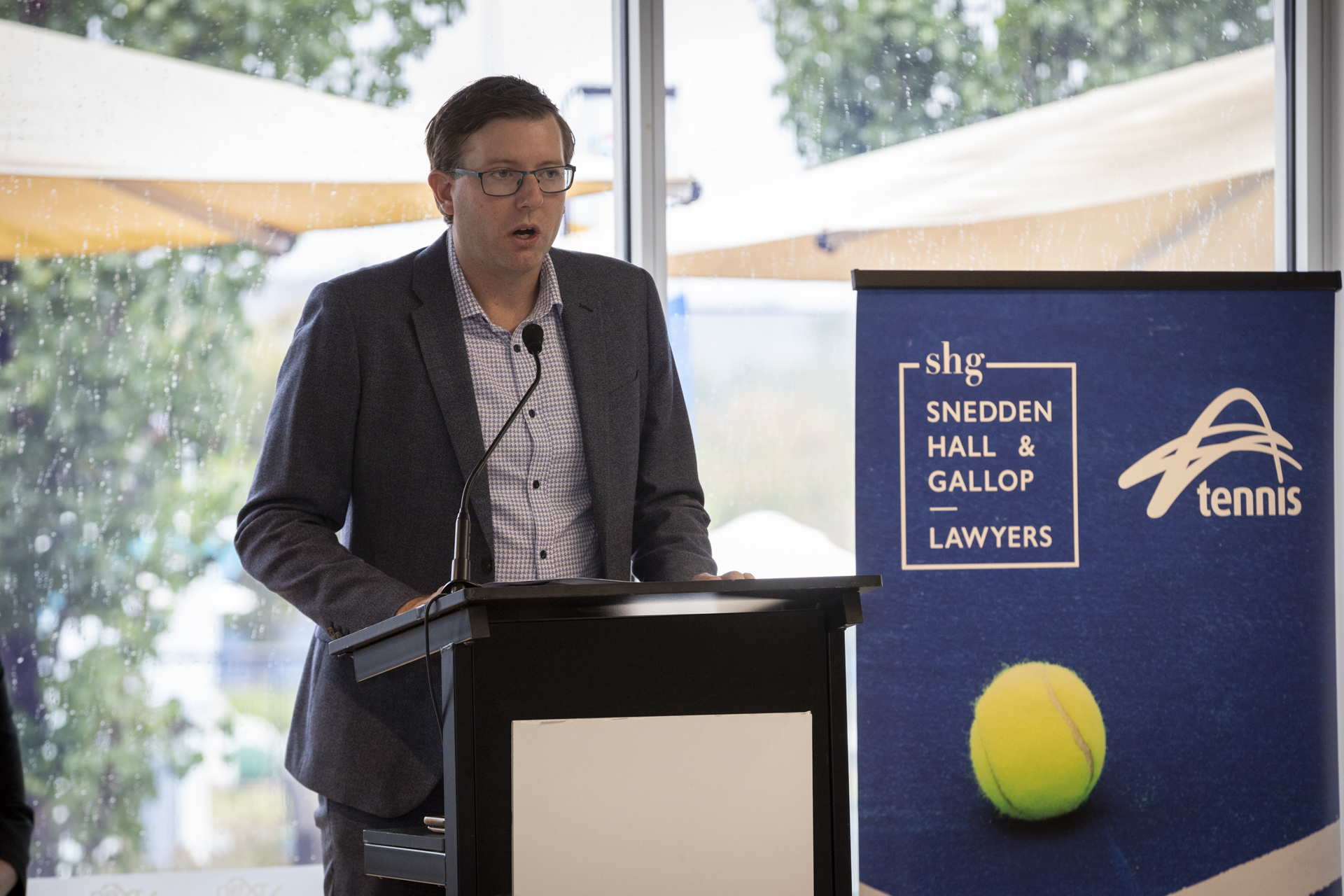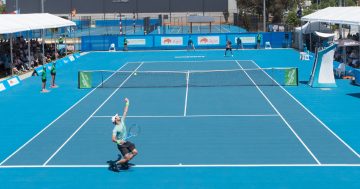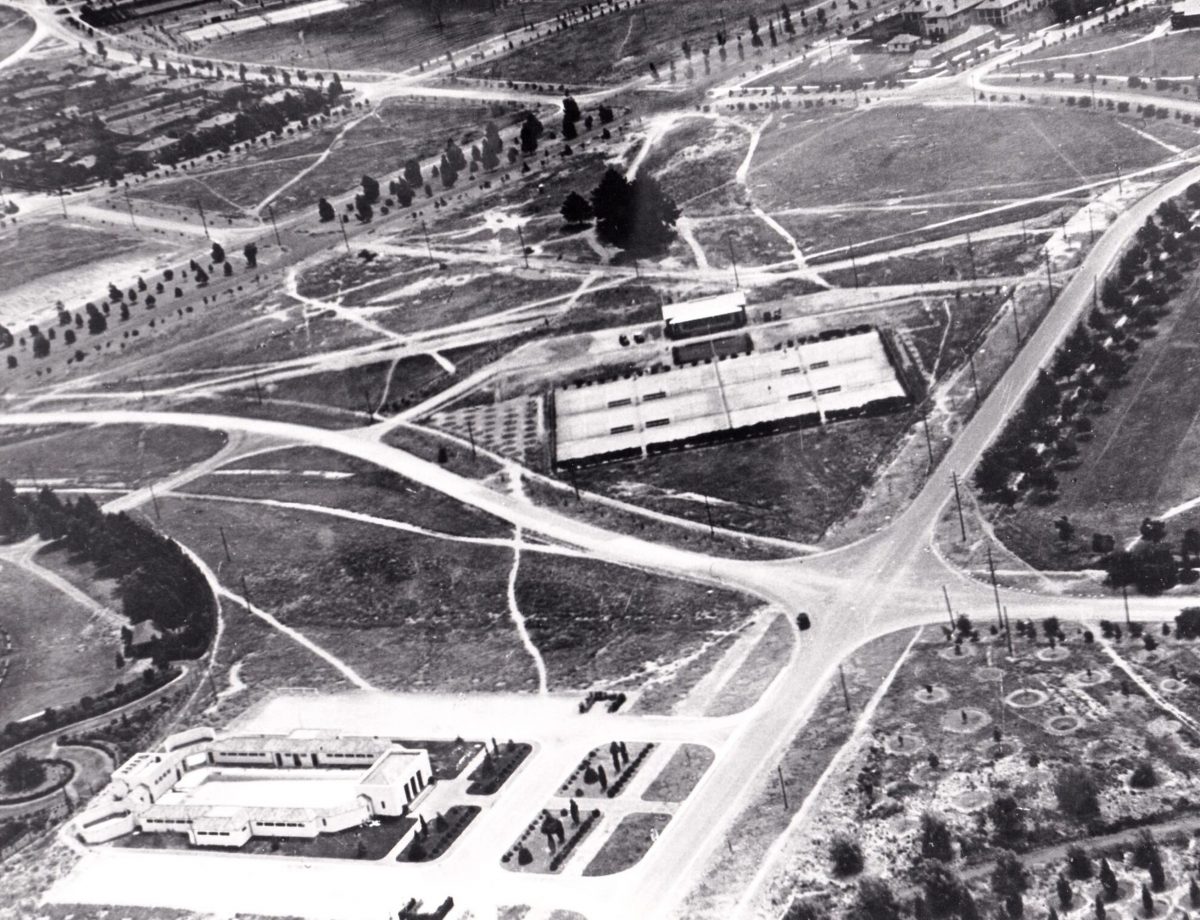
Manuka Tennis Courts in the early 1930s. Photo: Supplied.
As characters in the history of ACT tennis go, Charlie Hollis was pretty much up there.
Having coached the likes of Rod Laver and Fred Stolle, Hollis brought his prowess to the ACT. Living in a caravan behind the site currently occupied by the National Tennis Centre at Lyneham, Charlie Hollis became Canberra’s first resident coach in 1970.
Laver was just 10 years of age and living in Rockhampton when Hollis coached him. In so doing, Hollis contributed to Laver becoming one of the greatest players the world has ever seen.
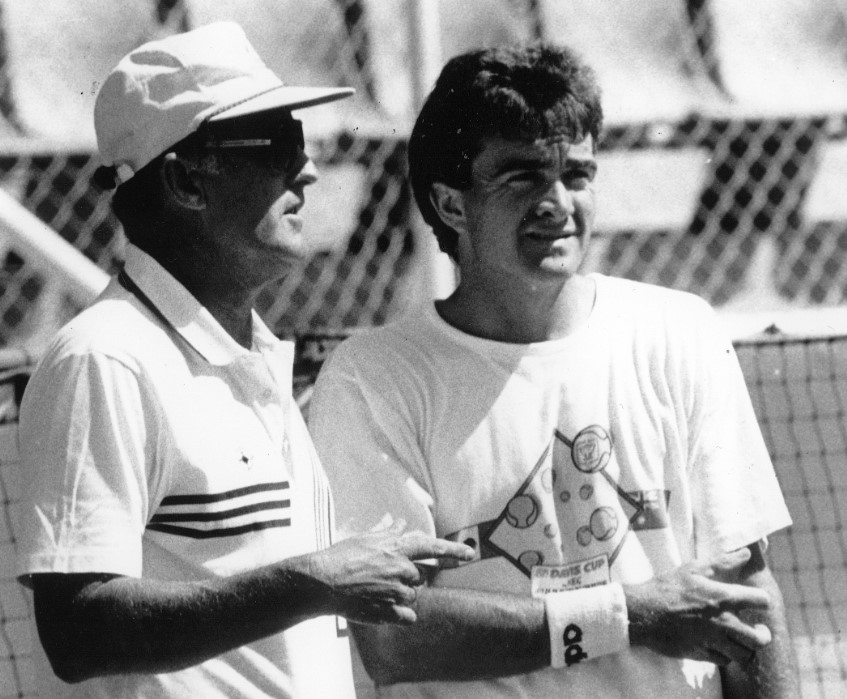
Neale Fraser (Captain) and Wally Masur – Davis Cup, 1980s. Photo: Supplied.
In Canberra during his 12-year stint, Hollis guided the careers of many, including Wally Masur, who rose to the ranking of 15 in the world. Twenty-three years later, Masur was overtaken as the highest-ranked male player in the history of ACT tennis by Nick Kyrgios, who rose to 13 in 2016.
Hollis is just one thread in the rich fabric of tennis in Canberra.
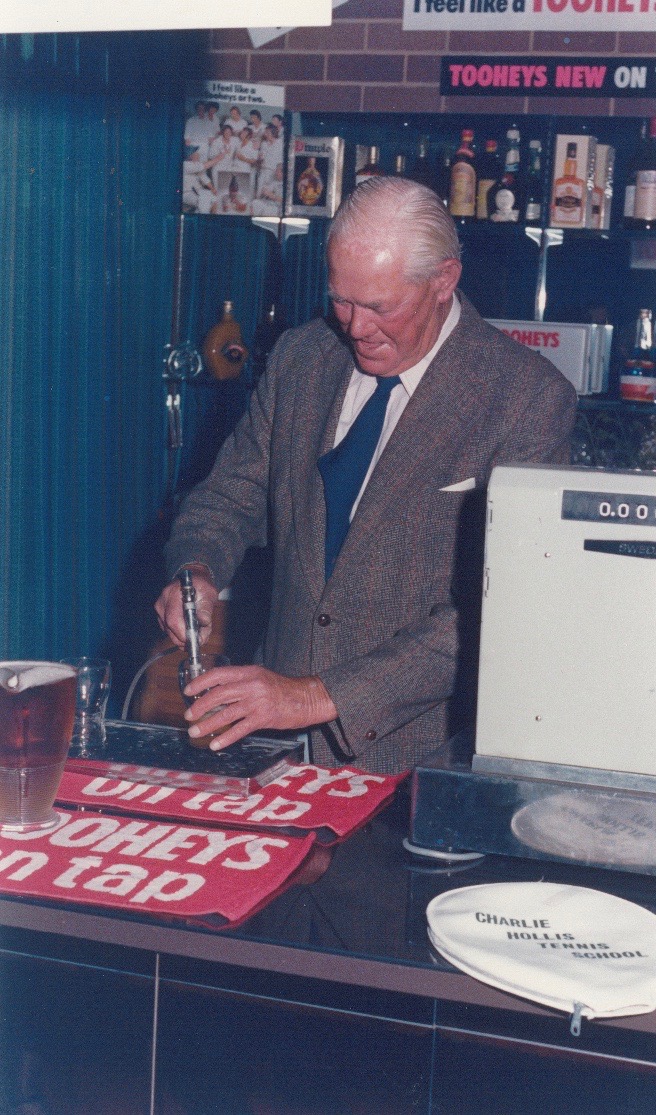
Charlie Hollis, legendary ACT Tennis Association coach for 12 years. Photo: Supplied.
Masur and Kyrgios are two of three ACT players to be ranked number one juniors in the world. The third is Ben Ellwood. Ben’s sister Annabel is the highest-ranked female player to come out of the ACT when she was ranked 57 in 1997.
Although exceptional achievements, the history of tennis in the ACT is broader than these rankings.
On 21 March 1923, the Federal Territory Tennis Association was formed at a meeting held at the Acton Amusement Hall.
In the early days of the sport, from 1928 until 1969 when it moved to Lyneham, the Manuka courts were the headquarters for tennis in Canberra.
In the 1920s, several clubs used the same court. Even the Fire Brigade had a tennis club, as did many church groups and local properties, such as ‘Weetangera’.
Leading players of that era included Reg Bennett, who first lived at the Molonglo Workers Camp in the 1920s.
When playing in the first ACT junior championship, his dad bought him a pair of sandshoes. Reg found them uncomfortable so he played in bare feet and won. From then until the 1960s, Reg won a record 22 ACT Residents titles.
As a tennis and cricket rep player, Keith Carnall was the best all-round sportsman in the ACT in the early 1900s.
Charlie Boag came to Canberra as a young boy in the early 1900s with his father moving to the city to build roads. His father built the Ainslie Courts, with Charlie Boag and his wife Jean (nee Crawley) later running the Reid courts. Both were prominent players and administrators, and Charlie later became President of ACT Tennis.

Charlie Boag and wife, Jean, were both legendary ACT players, from juniors in the 1920s to seniors in the 1980s. Photo: Supplied.
Joan Schumack’s parents owned a property, ‘Springvale’, now occupied by the suburb of Cook. Joan was the top pre-World War II player in women’s tennis in Canberra, winning six Resident and three Open singles titles before marrying and moving interstate.
In the 1950s, Peter Roberts was one of the dominant personalities in Canberra sport, as evidenced by his achievements as ACT champion in tennis, table tennis, badminton, squash and snooker.
By the 1960s, Bruce Larkham had entered the ACT tennis scene in significant fashion, becoming the first local player to head overseas and play competitively. His sons, Todd and Brent, followed this path.
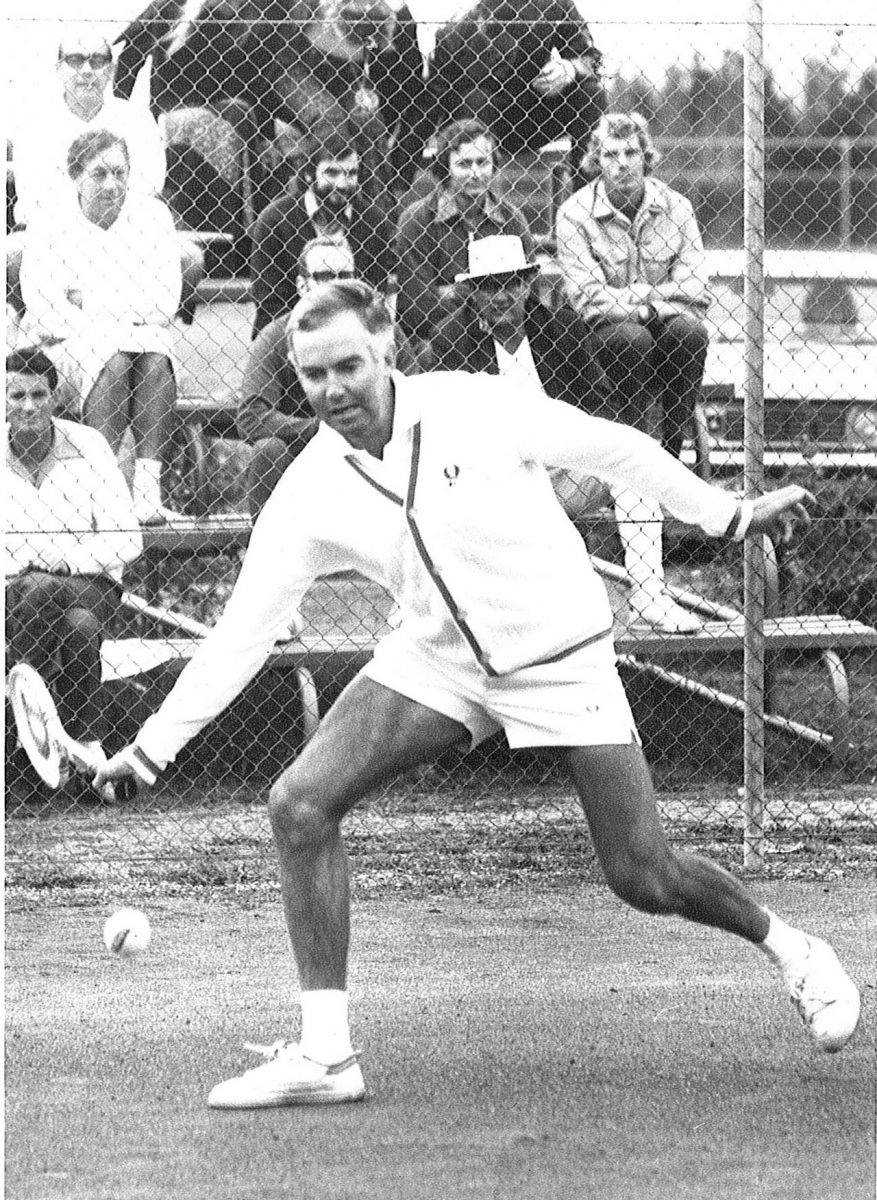
Bruce Larkham, tennis champion of the 1960s and early 1970s, winning a record eight Residents singles titles and five ACT Open titles. Photo: Supplied.
Many a Canberra tennis player learned to play the game at Larkham’s Hawker Tennis Centre, established in 1977.
Ros Balodis came to Canberra in the 1970s and progressed to dominate the sport, winning more ACT Residents titles than any other player in women’s tennis.
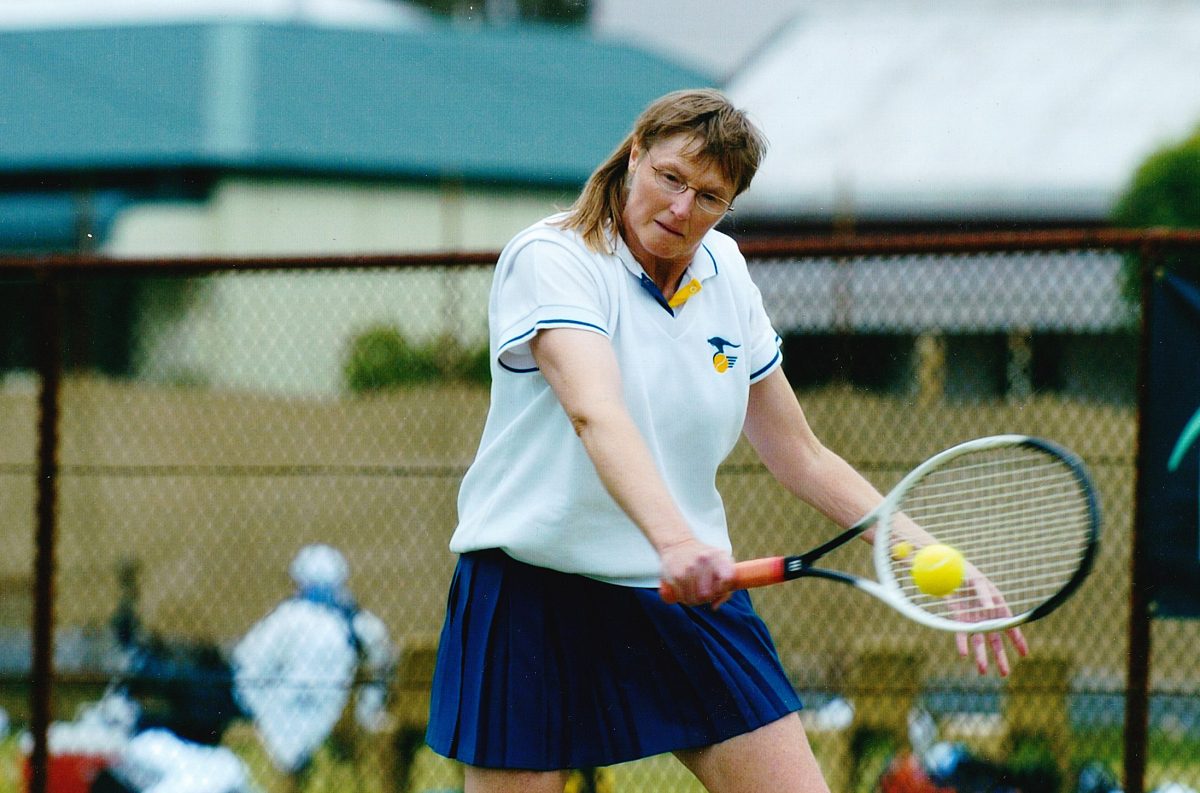
Ros Balodis is unbeaten in Australian seniors singles and a legend in the Australian Tennis Seniors Hall of Fame. Photo: Supplied.
Her record of seven ACT Residents crowns was well and truly eclipsed by her performance in veterans and seniors with eight world titles.
She hasn’t been beaten in Australia or Oceania in veteran singles since becoming eligible in 1998.
Much of what we see in tennis in Canberra in 2023, as the sport prepares to celebrate 100 years in the city, wouldn’t have been possible without administrators such as Keith Carnall, Charlie Boag and Ken Willis.
Ken Willis, who was inducted into the ACT Sport Hall of Fame, led the sport as Secretary and President of the ACT Lawn Tennis Association from 1954 until 1977.
Current Tennis ACT CEO Kim Kachel came to Canberra in the late 80s-early 90s with his father, who was head coach of the AIS for 13 years.
“I played my first tournaments at Hawker with the Larkhams at the National Tennis Centre,” remembers Kim.
“It’s come the full circle from a primary school kid in Canberra to now being the CEO of Tennis ACT.”
For chair of the Tennis ACT Walk of Fame Committee and former Tennis ACT Board member Colin Adrian, researching the history of tennis in Canberra has been a labour of love.
Colin says, “The history of tennis in the ACT is closely linked to the whole development of the city from sheep farms to where it is today. The sport has grown with the city. We now have 35 affiliated clubs, schools and organisations.”
Tennis ACT will celebrate 100 years of tennis in the ACT with a centenary dinner on 4 March. To stay up to date on the 100 Years of Tennis ACT celebrations, please visit Tennis ACT on Facebook.












